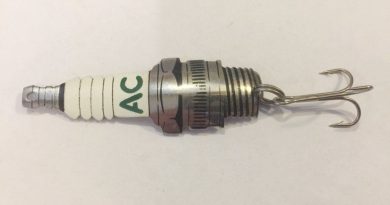Releasing the Beauty: Catch and Release Guidelines for Ethical Fishing in the UK
Fishing is not just about catching; it’s also about conservation and ensuring the sustainability of fish populations. In the United Kingdom, catch and release has become an integral part of ethical angling practices, allowing anglers to enjoy their sport while contributing to the protection of aquatic ecosystems. This guide explores the essential catch and release guidelines for UK fishing, emphasizing responsible and sustainable practices.
- Use Barble ss Hooks: Selecting the right equipment is crucial for the successful catch and release of fish. Opt for barbless hooks to minimize damage and facilitate an easier release. Barbless hooks are designed to make hook removal smoother, reducing stress on the fish and increasing their chances of survival after release.
- Handle Fish with Care: Minimize the time the fish spends out of the water by handling it with care. Wet your hands before touching the fish to prevent removing its protective slime layer, which helps ward off infections. Avoid squeezing the fish tightly, and never touch their gills, as they are extremely sensitive. Support the fish horizontally, providing adequate support to its body during handling.
- Use Landing Nets: When landing a fish, consider using a landing net made of fish-friendly materials. This helps minimize handling stress and prevents injury to the fish. Ensure the net is knotless to avoid damaging the fish’s delicate scales and fins.
- Practice Proper Hook Removal: If the fish is hooked deeply, use long-nosed pliers or a specialized tool to remove the hook gently. Avoid using excessive force, and if the hook is embedded too deeply, consider cutting the line near the hook rather than causing further harm by attempting to remove it.
- Revive Before Release: Before releasing the fish, allow it to revive in the water. Hold the fish in an upright position, allowing water to flow over its gills. Ensure the fish is strong enough to swim away on its own before releasing it. If necessary, gently move the fish back and forth to promote water flow.
- Choose the Right Fishing Gear: Select appropriate tackle and gear based on the species you are targeting. Lighter gear can provide a more enjoyable fight without over-stressing the fish. Additionally, using the correct line strength and fishing equipment helps reduce the likelihood of injuring the fish during the catch.
- Know the Regulations: Stay informed about local fishing regulations, including size limits, bag limits, and any specific catch and release guidelines for particular waters. Regulations may vary between locations, and adherence to these guidelines contributes to sustainable fisheries management.
Conclusion:
Catch and release fishing is more than a practice; it’s a commitment to the preservation of aquatic ecosystems. By following these catch and release guidelines in the UK, anglers can contribute to the well-being of fish populations and ensure the enjoyment of the sport for generations to come. As stewards of the waters, responsible anglers play a vital role in maintaining the delicate balance between recreational fishing and environmental conservation.



